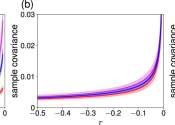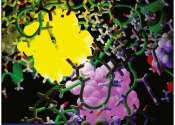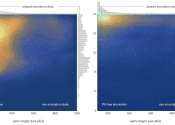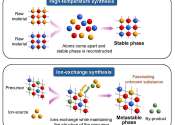New algorithm cuts through 'noisy' data to better predict tipping points
Whether you're trying to predict a climate catastrophe or mental health crisis, mathematics tells us to look for fluctuations.

Whether you're trying to predict a climate catastrophe or mental health crisis, mathematics tells us to look for fluctuations.
Mathematics
16 hours ago
0
103

Scientists have shed light on a new, transformative approach that could help resolve a dispute over the Nile river's water resources.
Environment
19 hours ago
0
27

Circumstantial evidence points to climate change as worsening the deadly deluge that just flooded Dubai and other parts of the Persian Gulf, but scientists didn't discover the definitive fingerprints of greenhouse gas-triggered ...
Environment
Apr 25, 2024
0
13

Researchers in North Carolina have created a simulation model to analyze how coastal management activities meant to protect barrier islands from sea-level rise can disrupt the natural processes that are keeping barrier islands ...
Earth Sciences
Apr 24, 2024
0
2

Researchers believe that understanding how electrons move within small, natural systems could power a more sustainable future for our energy grid.
Analytical Chemistry
Apr 23, 2024
0
129

Molecular dynamics (MD) simulations have become a powerful tool in the ever-growing fields of molecular biology and drug development. While many MD simulation techniques exist, parallel cascade selection MD (PaCS-MD) is a ...
Biochemistry
Apr 23, 2024
0
36

A small team of planetary scientists from the California Institute of Technology, Université Côte d'Azur and Southwest Research Institute reports possible new evidence of Planet 9. They have published their paper on the ...

Quantum physics requires high-precision sensing techniques to delve deeper into the microscopic properties of materials. From the analog quantum processors that have emerged recently, quantum-gas microscopes have proven to ...
Quantum Physics
Apr 22, 2024
0
508

Tohoku University researchers have unveiled a new means of predicting how to synthesize new materials via the ion-exchange. Based on computer simulations, the method significantly reduces the time and energy required to explore ...
Analytical Chemistry
Apr 19, 2024
0
411

Most people are familiar with the DNA double-helix. Its twisted ladder shape forms because the long pieces of DNA that make up our genome are exactly complementary—every adenine paired to a thymine, and every cytosine paired ...
Molecular & Computational biology
Apr 18, 2024
0
6
Simulation is the imitation of some real thing, state of affairs, or process. The act of simulating something generally entails representing certain key characteristics or behaviours of a selected physical or abstract system.
Simulation is used in many contexts, including the modeling of natural systems or human systems in order to gain insight into their functioning. Other contexts include simulation of technology for performance optimization, safety engineering, testing, training and education. Simulation can be used to show the eventual real effects of alternative conditions and courses of action.
Key issues in simulation include acquisition of valid source information about the relevent selection of key characteristics and behaviours, the use of simplifying approximations and assumptions within the simulation, and fidelity and validity of the simulation outcomes.
This text uses material from Wikipedia, licensed under CC BY-SA